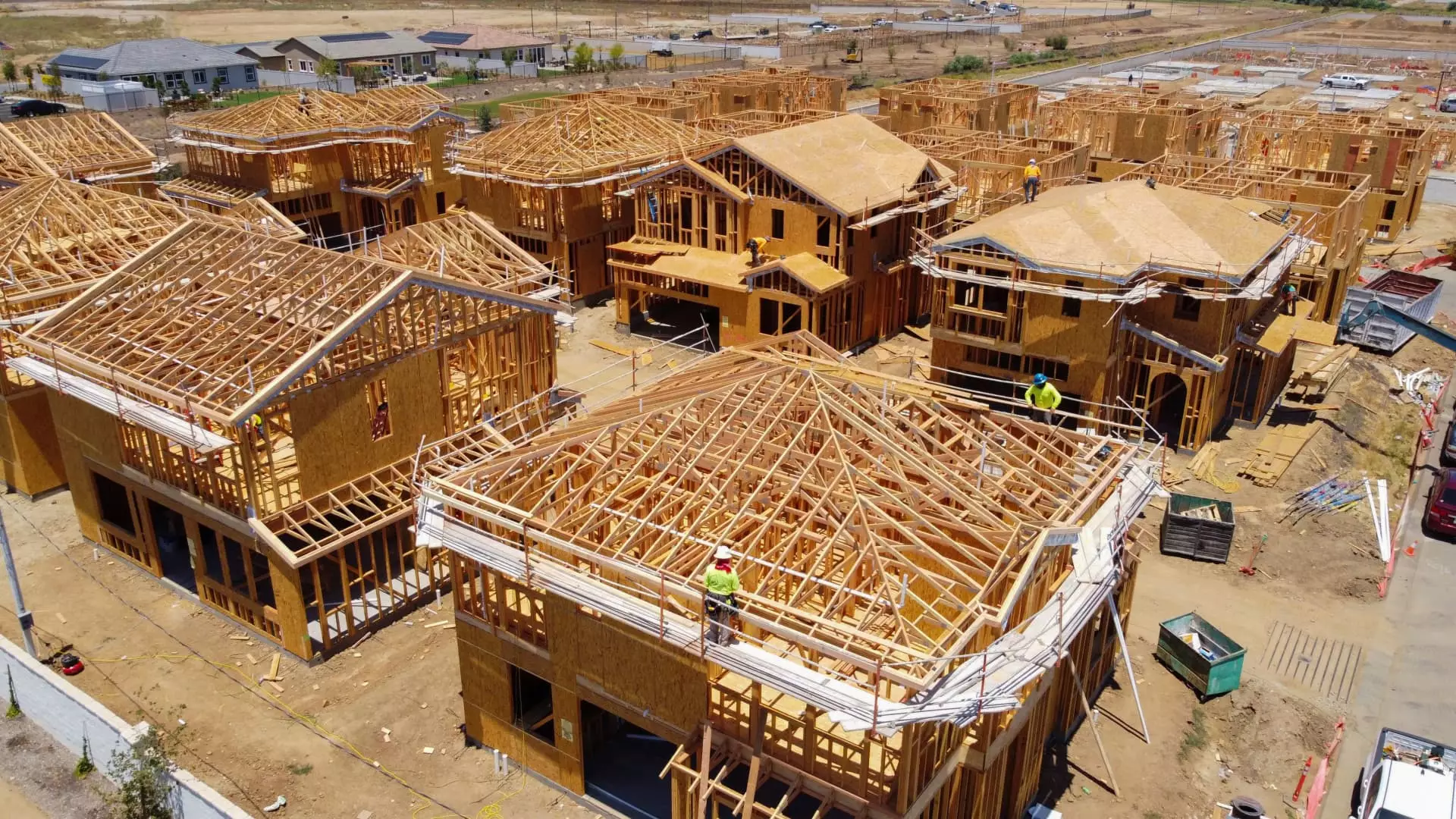As the Federal Reserve signals an imminent interest rate cut, the homebuilding sector is buzzing with optimism. Since October 2023, homebuilder stocks have been on a steady rise, buoyed by expectations that the prolonged cycle of rate hikes has ended. This speculative bullishness is underpinned by the anticipation of easier monetary conditions, which typically favors the housing market. RBC Capital Markets analyst Mike Dahl has weighed in on the situation, cautioning that homebuilder stocks appear to be “priced for perfection.” Essentially, the current valuations and strong performance may not accurately reflect the underlying economic realities.
Dahl’s words resonate particularly loud given that the housing sector is currently grappling with uneven fundamentals. Despite the positive trend in stock prices, there’s an underlying fragility that could disrupt this apparent upward trajectory. Dahl notes that many of the homebuilder stocks are experiencing returns that are significantly ahead of historical averages for previous Fed cycles. This indicates that the market’s optimism may already be baked into the prices, suggesting little room for error should the economy not respond as favorably as anticipated.
In the unfolding story of homebuilder stock performance, major players like Toll Brothers, Taylor Morrison Home, and Tri Pointe Homes have seen impressive gains—46%, 28%, and 25% respectively in 2024. This bullish momentum positions these companies well within the S&P Homebuilders ETF (XHB), which has enjoyed an almost 26% hike this year as market sentiment shifts in favor of rate cuts. The momentum has been especially pronounced over the past three months, as investors align hope for a future with lower rates amidst declining inflation.
Historically, the returns on homebuilder stocks have been modest during rate-cutting cycles, with the average gains hovering only around 4-19%. With this backdrop, Dahl’s caution suggests that the current gains for the homebuilder cohort could be overly optimistic. Market participants are eager for clarity following the Fed’s upcoming policy meeting. The situation bears weighty implications for investors who may be wagering against an uncertain economic landscape that could shift dramatically based on the timing and magnitude of any decision made by the Fed.
Traders currently predict a 59% chance of a substantial 50 basis point cut in interest rates, while the likelihood of a more tempered 25 basis point change is noted at 41%. While the market appears poised for aggressive cuts, the prevailing wisdom among economists advocates for a more conservative approach to monetary easing. Concerns linger that an expansive cut could signal a jittery economy, suggesting that the Fed may be grappling with a potentially swift economic decline.
Dahl’s analysis has raised important flags about the implications of a deep interest rate cut on broader economic health. Should the market be forced to interpret a downturn in consumer confidence or employment conditions, the ramifications could be steep for constructions and real estate. Despite the positive developments in homebuilder stocks, Dahl advises a cautious approach—especially in cases where certain valuations appear particularly stretched, highlighting companies like Lennar and KB Home as emblematic of such caution.
Despite the challenges, signs of optimism surface in housing data, albeit with a nuanced interpretation. Analysts like Matthew Bouley from Barclays are particularly vigilant for signs that a drop in mortgage rates Fcould ignite consumer enthusiasm in the housing market. Current data indicates a rise in both existing and new home inventories and relatively slow growth in new single-family housing starts and mortgage applications. Yet, the sharp uptick in new home sales suggests that many potential buyers are actively re-entering the market, possibly fueled by dipping mortgage rates.
Bouley’s examination indicates that housing data could provide a supportive backdrop for homebuilder stocks, although the risk-reward dynamic is increasingly balanced. Larger builders such as D.R. Horton stand to benefit the most in this climate due to their ability to leverage incentives and better manage cost structures in response to fluctuating macroeconomic factors. This advantage could translate into retained demand and safeguarded profit margins, making these larger firms more resilient in the face of potential ongoing economic volatility.
As homebuilder stocks dance on the precipice of anticipated rate cuts, the market must navigate a complex web of economic variables that could shift at any moment. The combination of rising stock prices, cautious forecasts, and mixed housing data creates an environment ripe for both opportunity and peril. Investors would be prudent to heed the terrain carefully, as the balance between a soft landing and an economic downturn hangs in the balance. Amid this uncertainty, the only clear path forward may be one marked by caution, patience, and strategic positioning.

